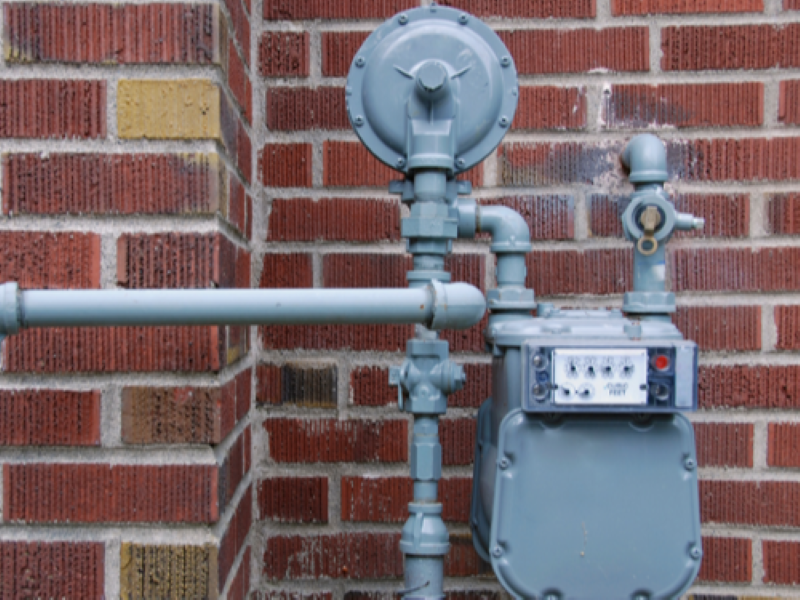Natural Gas Meter Safety
In the event of a natural gas emergency, call 911 and Summit Utilities at 800-992-7552.
Natural Gas Meter Safety
To ensure safe and reliable service to our customers, federal regulations require periodic inspection to equipment, including the piping and natural gas meter Summit Utilities owns.
- Summit Utilities owns the natural gas meter and the piping that goes into the meter from the distribution main line.
- Customers own the piping that runs from the meter to their natural gas appliances, and it is the customer's responsibility to maintain that portion of piping.
Learn More About Customer Owned Piping
To keep you safe:
- Do not store items on or around your meter
- Keep your meter clear of landscaping that obstructs access or visibility
- Do not wrap or insulate your meter
- Do not tie pets to the meter installation
- Do not allow children to climb on or play near your meter
- Use caution when using lawn equipment around your meter
- Do not tamper with your meter or attempt to service or maintain the meter yourself
- If the meter is damaged or you suspect a gas leak, call Summit Utilities immediately
Read More About Meter Safety

Dec 13, 2024
Natural Gas Meter Safety, Access, and Upkeep
Your natural gas meter is an essential component in safely delivering energy for home heating, hot water, and cooking needs. Located outside your home, the meter also measures your monthly gas usage. To maintain this critical equipment and help ensure safety, both for you and natural gas service employees, please follow these guidelines:
Ensure Safe Access
Clear Pathway: Regularly inspect the path to your gas meter to ensure it's free from debris, large branches, or overgrown plants. Clear access is crucial for timely maintenance and emergency situations. As a general rule, you should have about 3 feet of unobstructed space around your natural gas meter.
Seasonal Maintenance
Autumn Care: Remove accumulated leaves around your meter to prevent blockage or damage.
Winter Precautions: Use a broom with soft bristles to gently remove snow and ice. Don’t use a shovel or other sharp tools and never kick ice off the meter and pipes. Be sure to also remove icicles from eaves and gutters to prevent freezing on the meter or vent pipe.
Spring and Summer: Keep landscaping and shrubbery trimmed back to avoid encroachment on the meter.
Avoiding Obstructions
Personal Items: Never lean equipment, garbage bins, or bicycles against your meter. Items like these could damage piping and block access in an emergency.
Attachments: Do not tie pets, hoses, or clotheslines to your meter. This could lead to hazardous situations and equipment damage.
Ventilation: Gas meters have a vent that helps regulate their pressure, so keep your natural gas meter in an open, well-ventilated space. Gas meters should not be enclosed by a structure such as a deck or shed. Do not cover the meter with anything, like a tarp, for example, and don’t place anything on top of the meter. Unrestricted access is vital for safety checks and maintenance and line locating.
As your natural gas company, we prioritize safety above all else. If you suspect any damage or have concerns about your meter, please contact us immediately. For more detailed safety tips and resources, visit our Safety page. Stay informed and keep your meter area secure to ensure everyone's safety.
Terms of Use | Privacy Policy | Careers | Newsroom | Contact Us
© 2025 Summit Utilities Inc. All rights reserved. | Sitemap

